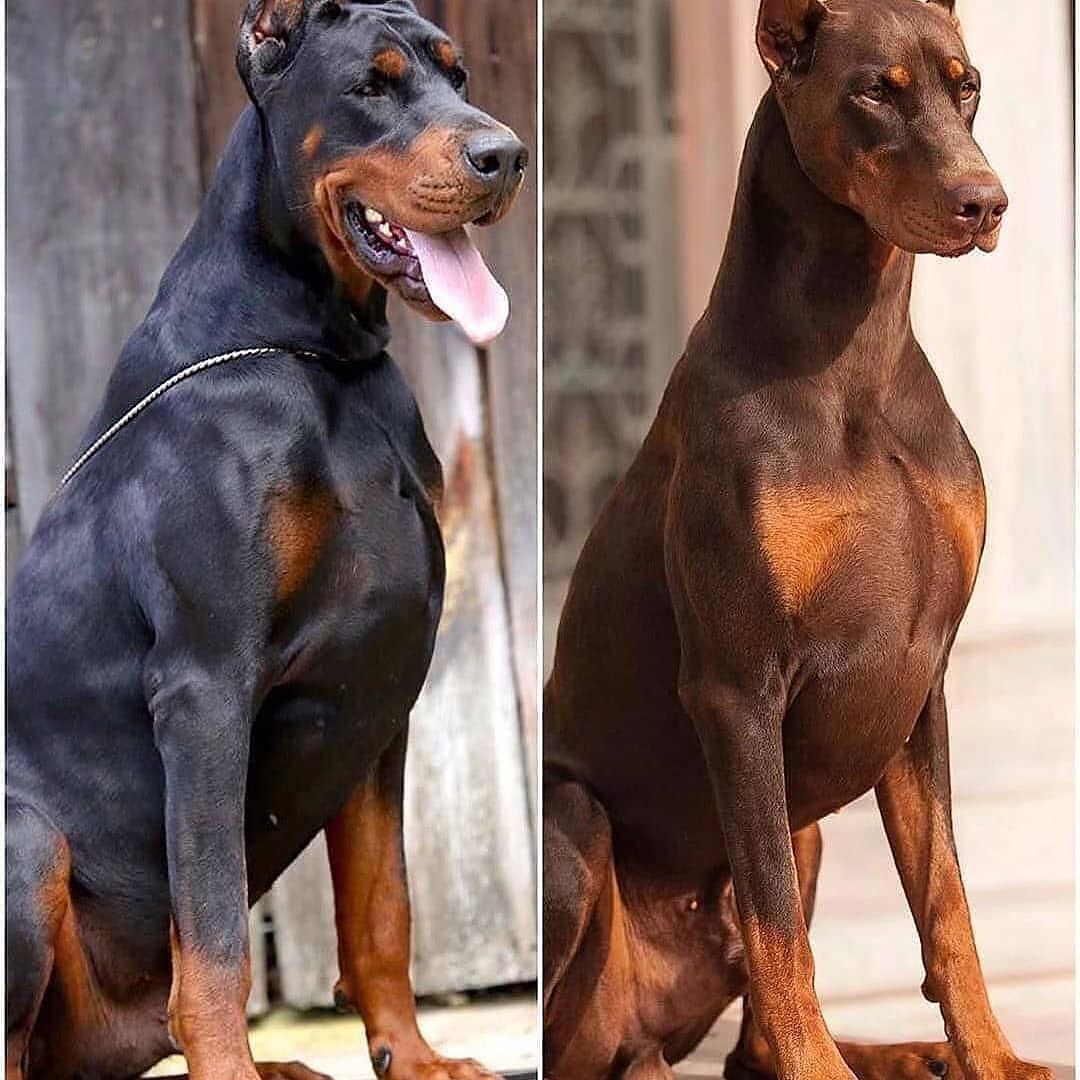As you embark on the journey of welcoming a Doberman into your life, one of the critical decisions you’ll face is choosing between European and American bloodlines. The Doberman Pinscher, renowned for its loyalty, intelligence, and versatility, comes in two distinct bloodlines with subtle yet essential differences. In this comprehensive guide, we will explore the factors you need to consider when choosing between European Doberman and American Doberman, shedding light on their origins, appearance, temperament, health considerations, and more. By understanding these factors, you can make an informed decision that aligns with your lifestyle, preferences, and the traits you seek in a Doberman companion.
Origins and History
To comprehend the differences between European Doberman and American Doberman, it’s crucial to delve into their origins and historical development. The Doberman Pinscher breed was created in the late 19th century by a German tax collector named Louis Dobermann. Seeking a versatile and loyal guardian, Dobermann carefully selected various dog breeds, including the Rottweiler, German Pinscher, and Greyhound, to create the perfect working dog. The Doberman’s initial purpose was to accompany him on his tax collection duties and protect him from potential threats.
European Doberman:
European Dobermans trace their lineage back to the breed’s birthplace in Germany. These dogs are often referred to as “German” or “working” Dobermans, as they adhere more closely to the breed’s original purpose and working traits. They tend to have a more robust and compact build, showcasing the qualities required for tasks such as guarding, police work, and search and rescue operations.
American Doberman:
On the other side of the Atlantic, American breeders developed a distinct line of Dobermans with a focus on conformation and showmanship. American Dobermans, often called “show” Dobermans, have been selectively bred for their appearance, participating in various dog shows and competitions. Their appearance may differ slightly from the European Doberman, as they have been bred with a stronger emphasis on physical attributes that conform to breed standards.
Appearance and Size:
While European Doberman and American Doberman share similar breed standards, there are notable differences in their appearance.
European Doberman:
European Dobermans tend to have a more robust and substantial build. They often exhibit a larger bone structure, a more muscular physique, and a deeper chest compared to their American counterparts. European Doberman may also have a more pronounced and distinctive head shape, with a broader muzzle and larger, more prominent ears.
American Doberman:
Bred for show purposes, American Dobermans can possess a refined and elegant appearance. They tend to have a slightly lighter bone structure and a more refined head shape, with a narrower muzzle and more almond-shaped eyes. While their physical attributes may differ slightly, it’s essential to note that both European and American Dobermans are equally striking and captivating in their unique ways.
Temperament and Personality:
Various factors like genetics, socialization, training, and upbringing influence a Doberman’s temperament and personality. However, there are some general tendencies that can be observed in European and American Dobermans.
European Doberman:
European Dobermans, driven by work instincts, display assertiveness and vigilance. They are highly protective and devoted to family and home. Their higher energy levels necessitate more mental and physical stimulation to keep them engaged and satisfied. Furthermore, they exhibit reserved demeanor towards strangers, ideal for guarding. Proper socialization ensures confidence and good behavior in diverse scenarios. European Dobermans excel in sports, police, search-rescue, due to work ethic. Their tenacity suits roles like obedience, showcasing versatility. Intelligence, loyalty, and protective instincts create formidable companions. Those valuing uniqueness find Dobermans devoted and admirable.
American Doberman:
Renowned for their friendly, loving demeanor, American Dobermans suit families with children and other pets exceptionally well. Sociable nature fosters strong human bonds, open to new people and settings, enhancing adaptability and acceptance in Dobermans. Retaining protective instincts, Dobermans are versatile companions due to approachability and adaptability, thriving in diverse social contexts. Due to their affectionate and people-oriented nature, American Dobermans thrive on human interaction and enjoy being an integral part of family activities and daily life. Their gentle and easy-going temperament contributes to their popularity as beloved family pets and loyal companions.
Health Considerations:
Likewise, both European Doberman and American Dobermans are susceptible to certain health issues commonly seen in the breed. Responsible breeders also strive to minimize the risk of hereditary health problems through selective breeding and health testing.
Common Health Concerns:
Dobermans, regardless of their bloodline, may be prone to certain genetic conditions, including hip dysplasia, cardiomyopathy, von Willebrand’s disease (a blood clotting disorder), and progressive retinal atrophy (PRA). Regular health screenings, a balanced diet, and regular exercise are essential to maintain the overall well-being of your Doberman.
European vs. American Health Trends:
While there is ongoing debate about the health disparities between European and American Dobermans, some breed enthusiasts believe that European Doberman tend to have a longer lifespan and lower incidence of certain health issues. However, a consensus on this claim is lacking. Health of a Dobermans hinges on breeding and individual genetics, among other factors.
Working Ability:
European Dobermans bred for work, American for confirmation. Earlier mentioned distinction between their origins, purposes, and qualities. As a result, there may be variations in the working ability and drive between the two bloodlines.
European Doberman:
Moreover, European Dobermans excel in tasks like protection, police, and search-rescue due to robust work drive and suitability. They also thrive in environments that allow them to utilize their intelligence and physical capabilities.
American Doberman:
Furthermore, American Dobermans may exhibit a more moderate working drive, since their breeding history has strongly emphasized conformation and showmanship. While retaining protective instincts, Dobermans might lean towards companion roles, excelling in obedience and agility competitions.
Availability and Popularity:
Both European and American Dobermans are readily available in many parts of the world. In the United States, the prevalence of American Dobermans stems from their popularity in show rings and as family pets. European Dobermans are also found in the US, but they may be less common and often sought after by enthusiasts who prioritize working traits and unique appearances.
Training and Socialization
Regardless of the bloodline you choose, early training and socialization vitalize a well-rounded and well-behaved Doberman. Train your Doberman early using positive reinforcement for good behavior and discouraging undesirable habits. Additionally, socialize your Doberman with various people, animals, and environments to ensure they grow up to be confident and well-adjusted dogs.
Conclusion
When choosing between European Doberman or American Doberman, consider your lifestyle, preferences, and desired traits. Make this decision thoughtfully for a compatible canine companion. While both bloodlines share the same noble heritage and captivating qualities, they have subtle differences that may influence your choice. Additionally, nurture your selected Doberman’s traits, whether European or American, fostering a cherished, balanced family member with love and care. Each Doberman is unique. Invest time, love, and effort to build a strong bond for years of loyalty and joy.

